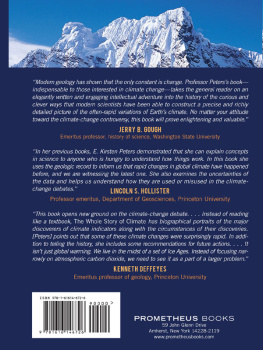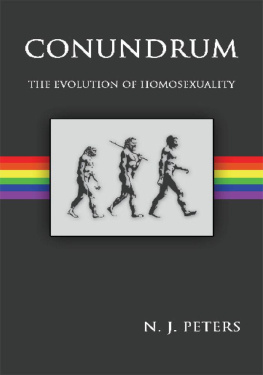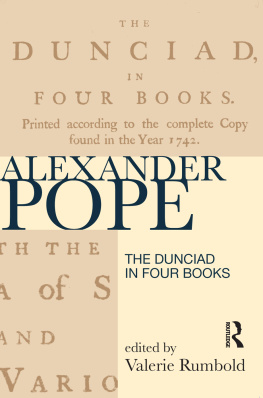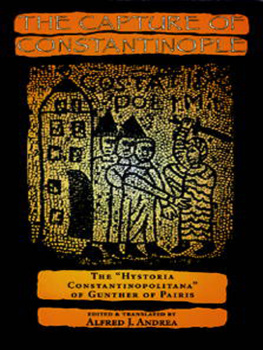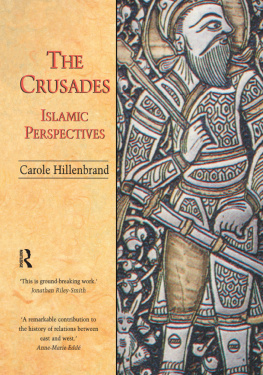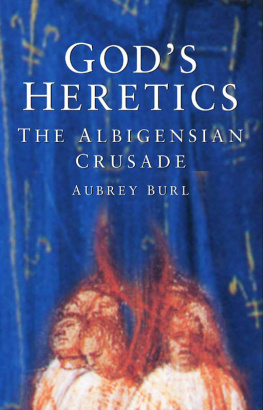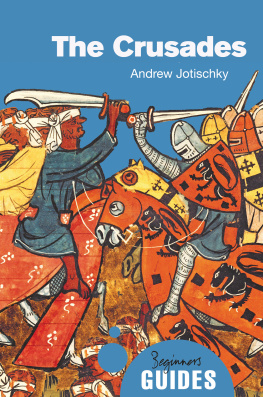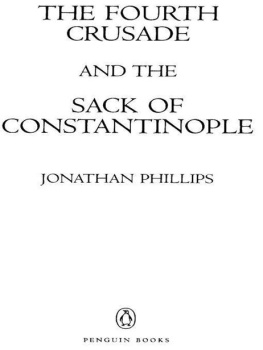Christian Society and the Crusades
1198-1229
Sources of Medieval History
Edited by EDWARD PETERS
The First Crusade: The Chronicle of Fulcher of Chartres and Other Source Materials
Christian Society and the Crusades, 11981229. Sources in Translation, including The Capture of Damietta by Oliver of Paderborn
Christian Society and the Crusades 1198-1229
Sources in Translation, including The Capture of Damietta by Oliver of Paderborn translated with notes by JOHN J. GAVIGAN
Edited, with an Introduction
by EDWARD PETERS

Copyright 1948 by the University of Pennsylvania Press
Copyright 1971 by the University of Pennsylvania Press, Inc.
All rights reserved
Library of Congress Catalog Card Number: 78-163385
ISBN: (paperbound edition) 0-8122-1024-7
ISBN: (clothbound edition) 0-8122-7644-2
PRINTED IN THE UNITED STATES OF AMERICA
Contents
Editors Note
Several of the texts reprinted in this volume were originally issued in the University of Pennsylvania Series, Translations and Reprints from the Original Sources of European History. This series, which began in 1894 and continued intermittently until the 1950s, was the first major attempt to place scholarly translations of primary source materials for the study of history in the hands of students in an inexpensive paperback format, although the series appeared only in hardback after 1940. In reissuing several of these smaller works in comprehensive volumes with additional materials, the Editor and the University of Pennsylvania Press have been guided by a conviction that these works of translation are still useful to the student and general reader and that the addition of material not in the original series contributes to a more complete understanding of the periods, episodes, and themes involved.
Introduction
Beasts of many kinds are attempting to destroy the vineyard of the Lord of Sabaoth, and their onset has so far succeeded against it that over no small area thorns have sprung up instead of vines and (with grief we report it!) the vines themselves are variously infected and diseased, and instead of the grape they bring forth the wild grape. Therefore we invoke the testimony of Him, who is a faithful witness in the Heavens, that of all the desires of our heart we long chiefly for two in this life, namely that we may work successfully to recover the Holy Land and to reform the Universal Church, both of which call for attention so immediate as to preclude further apathy or delay unless at the risk of great and serious danger.
Thus, in his letter of 1213 to the ecclesiastical officials of the province of Canterbury, did Pope Innocent III (11981216) depict the dangers to universal Christendom and the two most pressing tasks before it. To be sure, the first fifteen years of Innocents pontificate had not neglected these problems, and the great Pope had sent thousands of letters concerning the threatened state of Christendomletters which had begged, cajoled, entreated, and thundered against the enemies of the Church, of peace, and of right action. In 1215 and 1216 Innocent was to take two major steps to achieve the goals which he desired most. In 1215 he convened the Fourth Lateran Council, in which the work of earlier Church Councils toward the definition of dogma and law was completed and the reform of the Universal Church was, at least so it appeared, at last begun. At the end of the Council, Innocent took up his second task. He proclaimed the Fifth Crusade, which was to get underway in 1217, thereby, he hoped, bringing to completion his second great aim, the recovery of the Holy Land.
By 1198 the crusading Kingdom of Jerusalem had been reduced to a few towns on the Syrian coast whose lords and clergy continued to implore military aid from their fellow Christians in western Europe. Jerusalem itself had fallen to the armies of Saladin in 1187, and the Third Crusade, which had proposed to regain it, ended in bickering and failure. Its leaders, the most powerful rulers in the West, had either died or returned to more pressing affairs at home. Frederick I Barbarossa, the Roman Emperor, had died before reaching the Holy Land. Richard I Lionheart, King of England, had been captured by the Duke of Austria while enroute homein complete violation of his status as a Crusaderand held for an enormous ransom. King Philip II Augustus of France, having quarreled with Richard of England in the Holy Land, exploited Richards captivity by encroaching upon the English kings possessions in France, thus continuing the drawn-out military conflict between the rulers of France and England which had begun half a century earlier and would continue for many more years. The failure of the Third Crusade did not, however, dampen Christendoms crusading ardor. The Holy Land and the Christians in it remained in dire peril, and each pope after 1187 declared that the Crusade stood at the center of his duties as the leader of Christendom. Not only popes, but itinerant preachers, poets, and crusade propagandists continued to lament the distress of the Christians in The Lands Beyond the Sea. Secular as well as spiritual leaders proposed new crusading efforts. The Emperor Henry VI, the son of Frederick Barbarossa, was himself preparing to launch a massive offensive in the East when he died unexpectedly in 1197. In the following year, at a tournament at Ecry in France, a number of lay barons spontaneously took up the Cross.
The conviction that the Christian lands in Syria and Palestine were of utmost importance to Europeans and that their loss was a sure sign of Gods manifest displeasure with Christian society pervaded nearly all levels of thought in the period 11981229. Visionaries, lawyers, calculating and idealistic rulers, and calculating and idealistic popes expressed again and again the view that only by regaining the Vision of Peacethe allegorical meaning of Jerusalemcould Christian society be certain of divine favor. Yet this same Christian society faced other difficulties besides the loss of the Kingdom of Jerusalem to the Moslems. Since the eleventh century, religious dissent and unorthodox beliefs had appeared more frequently in western Europe itself, and the busy ecumenical and local Councils of the later twelfth century had begun the long process of the stricter definition of dogma which was to alienate yet more men from the Church. The problem of heresy, in fact, loomed no less large in 1198 than did the problem of the Holy Land. Nor did the dangers to orthodox belief and the integrity of the Church end with heresy. The late twelfth century had witnessed an enormous growth of both theoretical and actual power in the hands of the kings of Europe. The great struggle to free the Church and churchmen from lay domination, which had begun with the Investiture Contest in the late eleventh century, once again appeared to be headed toward defeat. Kings and lay lords encroached upon Church lands, and the Church often found itself with few defenses against these immediate threats. In the Kingdom of Sicily, for example, the vassals of the dead Emperor Henry VI so disregarded the Popes rights of overlordship that one of Innocent IIIs first acts was, in utter desperation, to threaten the launching of a Crusade against them. In this case, the Crusade was a last, desperate measure. Between 1198 and 1229, however, it would become the only instrument upon which the popes could rely for widespread supportto recover the Holy Land, to combat heresy, or to defend the Church itself. In the process of turning the Crusade from the Holy Land, popes and secular rulers transformed the Crusade Idea itself.
Next page

